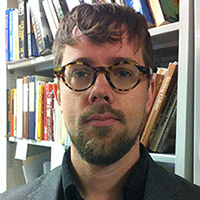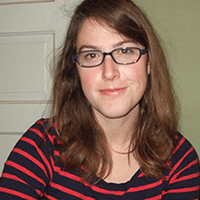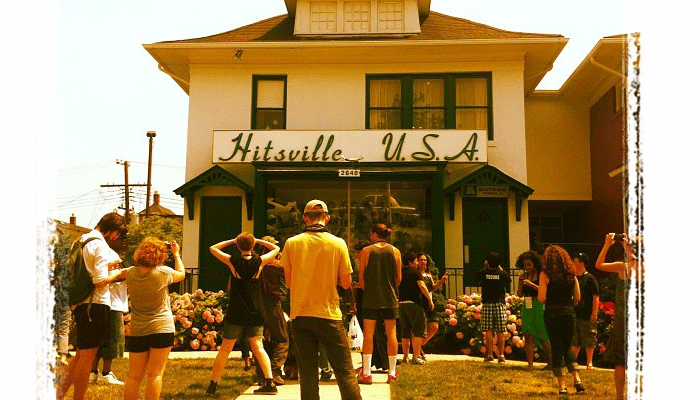Our interview with the Detroit Sound Conservancy
Photo courtesy of Carleton Gholz.
Every city has had a Golden Age. Detroit has had many, from Jazz to Motown to techno and hip-hop. On Martin Luther King, Jr. Day, UMS and the U-M MLK Day Symposium celebrate Detroit’s musical history at From Cass Corridor to the World, a performance which musically narrates this journey with celebrated Detroit artists.
We talked with founder Carleton Gholz and Ann Arbor representative Rachel Miller of the Detroit Sound Conservancy, an organization dedicated to musical preservation and conservation in the city of Detroit, about the organization’s efforts to preserve this heritage.
Skip to the bottom of the interview for the organization’s picks for must-visit Detroit music locations.
UMS: How did your background and involvement as a teacher, journalist, and DJ foster your interest in conserving Detroit sounds through Detroit Sound Conservancy?
Carleton Gholz: My experience as a teacher, DJ, and journalist came together after I returned to Detroit from college in 1999. I would teach during the morning and afternoon, come home and write music reviews and articles, and then explore the city’s prodigiously beautiful nightlife. I knew of Detroit’s music history when I was younger but it was someone else’s history—like my Uncle going to the famous rock concert venue the Grande Ballroom and seeing the MC5 when he was in high school during the 1960s. When I came back to the city I became a part of the story as I began to participate within the city’s culture. The Detroit Sound Conservancy is, in many ways, my offering of gratitude to a city that opened its sonic arms to me during a major transition in my life. The cultural, emotional, and intellectual debts I owe the city can never be repaid.
UMS: How did you become interested in working for the Detroit Sound Conservancy?
Rachel Miller: I became interested in the DSC over the summer as I was preparing to move to Ann Arbor and begin graduate school. I had done some work supporting the preservation of country and bluegrass music history in Maine, where I’m from originally, and I was intrigued by the obvious passion, expertise, and scrappiness of the DSC. Because of its relative youth, the Detroit Sound Conservancy has an opportunity to experiment with new models of preservation grounded in digital media and collaboration, and this is also quite exciting.
Personally, I get the most excited when thinking about regional variations of country music and the social histories of its various incarnations. Detroit offers a great place to think about the shared genealogy of country and blues music, and the cultural contexts that can join or separate the two genres.
UMS: What are the main musical histories (styles of music or specific locations) you are working to preserve in Detroit?
Detroit Sound Conservancy: We are exceptionally Catholic in our tastes; there is no one genre or style that we would want to preserve more than any other. Detroit is, paraphrasing the late Detroit blues musician Bobo Jenkins, an all-purpose music city. That said we are incredibly interested in the endangered United Sound Systems building located near Wayne State University in the Cass Corridor. The building began being used as a studio in 1933 but is currently shuttered. It’s future, like the future of many historical sites in Detroit, is very much in doubt (see http://detroitwiki.org/United_Sound_Systems). We are currently exploring what role we might play in USS’s future.
UMS: Why do you feel Detroit has such a rich musical history? Why is it necessary to help maintain and grow that musical history?
DSC: It is difficult to imagine an area of global popular music that Detroit musickers have not impacted. It is a cliche now that when the BBC wants to make a music documentary they come to Detroit (see for instance “Motor City’s Burning” via the BBC) and when a President wants to celebrate his reelection he makes sure to play Stevie Wonder. That said, Detroiters regularly struggle to preserve their musical histories while attempting to forge new ones. The DSC understands that Detroit’s culture is not immune from the struggles of Detroit’s economy, society, and politics. Therefore we will encourage and participate in discussions about cultural sustainability and growth wherever and whenever we can.
UMS: What is the biggest challenge in preserving the sounds of Detroit?
DSC: Money—getting it and using it properly—is a major challenge to preserving the sounds of Detroit. Conservation is a capital expensive and labor intensive process. That said the DSC believes that throwing good money after bad is not the answer so fundraising is not the only task that we have set for ourselves. The DSC encourages Detroit music lovers to think about cultural conservation within a framework of communal responsibility and sustainable progress. To do that we need to reflect on our own mistakes (the landmarks leveled, the recordings lost, the stories untold) and learn from best practices around the world. In other words, consciousness raising is a huge component to what the DSC does and therefore one of our most important challenges.
UMS: How has the Detroit Sound Conservancy worked with the city’s community?
DSC: So far the DSC has worked with the Detroit Public Library, specifically its HYPE Teen Center and the E. Azalia Hackley Collection, to keep our vision set on youth, service, and archival excellence. We have also worked with Model D., Detroit Wiki, and the Allied Media Conference to reach out to like-minded allies in Detroit and beyond.
UMS: What are the top five musical locations in Detroit? Why are they so valuable to both the community and to genre they represent?
DSC: This previous summer, the DSC put on a guided bus tour with Jocelyne Ninneman of Pont Productions for the Allied Media Conference. The tour featured local Detroit griots—cultural storytellers—bearing witness to important musical landmarks in the downtown core. Because space is so important to Detroit sound our griots offered these five places as beginning points to exploring Detroit music history—not ending points. In other words, this is not an absolute list since Detroit music means so much to so many people in so many different ways.
- United Sound Systems: One of the oldest recording studios in the city, United Sound is currently closed and in danger of eventually being torn down.
- Café Mahogany: One of a number of venues critical to Detroit’s hip hop golden age of the 1990s, Café Mahogany foregrounded Detroit’s lyrical and poetic energies years before Eminem would (re)present Detroit hip hop culture to a global stage.
- Exhibit 3000: Housed on the same street as Motown, Exhibit 3000 is the only museum dedicated to Detroit music in the city.
- Zoot’s Coffee House: In the heart of Detroit’s Cass Corridor neighborhood, Zoot’s was a centerpiece of 1990s independent music scene from punk to rave. The building now houses Model D and is the home of the new Cass Corridor Museum.
- Paradise Valley: Perhaps Detroit’s most historical area for 20th century culture, Paradise Valley centered around the bustling Hastings Street on Detroit’s near East Side before WWII. Largely cleared away for “urban renewal” projects, the area featured clubs, record stores, and studios where new artists, like John Lee Hooker, could find an audience and the means to make his music heard beyond Detroit.
 Carleton Gholz is a postdoctoral fellow at Northeastern University in Boston and the founder of the Detroit Sound Conservancy. He can be reached at detroitsoundconservancy@gmail.com
Carleton Gholz is a postdoctoral fellow at Northeastern University in Boston and the founder of the Detroit Sound Conservancy. He can be reached at detroitsoundconservancy@gmail.com
 Rachel Miller is a graduate student in American Culture at UM.
Rachel Miller is a graduate student in American Culture at UM.
What are your own favorite Detroit music spots?








